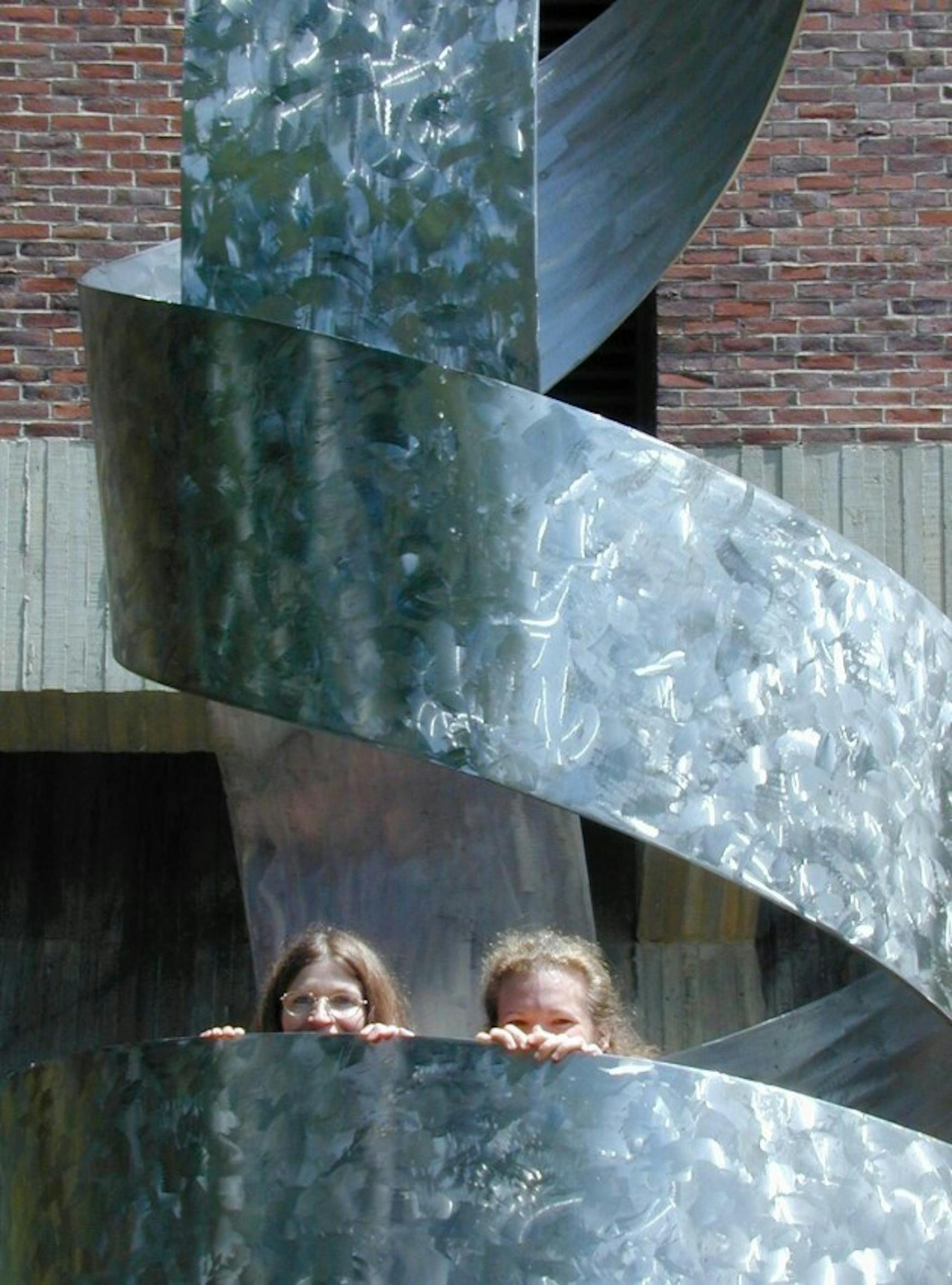Campus art fixture holds unique history
Public art, such as sculptures, carries the special characteristic of developing an iconic status over time, becoming a key part of a landscape even as its surroundings change. At Brandeis, the large silver pair of statues outside of the Rosenstiel Basic Medical Sciences Research Center have become a landscape all their own. The statues, together entitled "The Wand of Inquiry," have a long history that many students and faculty have yet to learn.
Installed in 1983, the sculptures were created by Lila Katzen, a sculptor who died in 1998 and was known for her large works of polished steel. Her work was known at Brandeis, as the Rose Art Museum featured her art in an exhibition in the fall season of the same year "The Wand of Inquiry" was put in place.
The taller sculpture of the pair has a "central flame-like element, [and] resembles a coiling double helix," writes Prof. Nancy Scott (FA) in Twelve + Sculptures, a publication on Brandeis sculptures, which was co-authored by students from her class "Modern Sculpture as Public Art" last academic year. The double helix structure is complemented by the "wide, horizontal ribbon" which sits only a couple of feet away.
In an interview with the Justice, Scott elaborated on the importance of smaller details in the structure to better understand Katzen's artistic intentions for public interaction with the sculpture. "I know that the platforms that the two stainless steel pieces sit on ... [raise] the whole piece up a bit from the earth, which means that you could sit on it more easily that way," she said. "I think she's made it very easy for people to want to interact [with the sculpture]." Prof. James Haber (BIOL), the current director of the Rosenstiel facility, verified the interaction that people have had with the two sculptures. "All of us have posed in front of them at some point," he said, referring to photographs taken by University scientists in front of "The Wand of Inquiry."
Prior to the construction of the Carl J. Shapiro Science Center, the statues were situated in a location near the Rosenstiel facility. In that location, Katzen had organized some landscaping to more properly situate the sculptures. "[Katzen] came to campus and did this beautiful landscaping around the sculpture with these sort of long grasses that glisten in the sun," Scott explained. However, when the Shapiro Science Center was constructed, the plantings were removed as machinery for the new science facility was installed around the sculptures. Both Scott and Haber reported sending requests to administrative offices within the University asking that the sculptures be moved away from the machinery to a more prominent space. Although the sculptures have since been moved to their current location away from the machinery, the greenery that Katzen had originally included are no longer there.
The larger statue of the coiling double helix is often interpreted as symbolic of DNA structure, although Scott clarified that Katzen "doesn't talk about that," and further, the title "The Wand of Inquiry" is "detach[ed] a little bit from any specific representational idea," effectively leaving the job of interpreting the meaning of the two sculptures entirely to the viewer. Nonetheless, a structure with such an inviting scientific interpretation is appropriate outside of a building filled with scientists. Susan Lowey, a Biochemistry professor at Brandeis in the 1970's and 80's, who is now on the faculty at the University of Vermont, had a personal understanding of the sculpture's deeper meaning. "The statue did represent the faith we all had in basic research as the path to discovering the secrets of nature," said Lowey, referring to the double helix statue in an email to the Justice. "And science to us was also an art form because an elegant structure was beautiful."




Please note All comments are eligible for publication in The Justice.